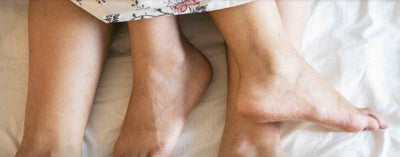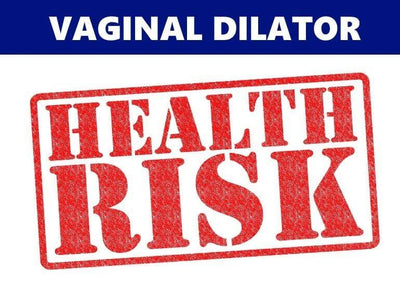
| Tara Langdale
Vaginal Agenesis: How it affects female children
Vaginal agenesis is a condition that occurs in female babies during pregnancy. This is when the baby’s reproductive system does not develop properly in the womb, meaning she can be born without various reproductive organs. Some babies are born without a vagina and uterus, whereas some are born with a midline uterus, but without a vagina or cervix. The cause of this genetic abnormality is not known, and it does not affect any particular ethnic groups. Genetically the baby is still classed as being female.
Vaginal agenesis affects 1 in 5,000 to 7,000 babies and is often noticed after birth. In some cases it goes unrecognized until puberty, in the absence of a menstrual cycle. Up to 90% of babies born with vaginal agenesis also have a condition called Mayer-von Rokitansky-Küster-Hauser’s Syndrome (MRKH). This condition often presents as lack of a cervix and uterus. Rare cases can have an absent kidney, dislocated kidney, or a fused kidney. Conditions such as impaired hearing, and curvature of the spine or skeletal abnormalities can also occur. All patients will have an incomplete birth canal or no vagina at all.
Females with vaginal agenesis are likely to have ovaries and normal external genitalia such as a fully functioning clitoris. Females with vaginal agenesis will develop all other organs and functions associated with puberty (breasts, armpit hair, etc.), even without a menstrual cycle.
WHAT ARE THE SYMPTOMS OF VAGINAL AGENESIS?
Vaginal agenesis often presents as follows:
- A little pouch or dimple in place of a vaginal opening
- No monthly menstrual cycle
- If there is a uterus but no birth canal, pain in the lower abdomen
It is also worth noting that between 7% and 8% of vaginal agenesis patients are diagnosed with androgen insensitivity syndrome (AIS). This means that they will look female in appearance, but will not have a vagina, cervix, womb, ovaries, or fallopian tubes.
TREATMENTS FOR VAGINAL AGENESIS
Firstly, it is important to properly diagnose the condition. Testing can be done through the following means:
- An external genital exam or modified internal exam
- An ultrasound or MRI scan
- Testing for Mayer-von Rokitansky–Küster-Hauser’s (MRKH) syndrome
- Karyotyping (an examination of chromosomes via cell samples)
Treatment may not be necessary in the absence of pain or medical problems caused by the condition.
SURGERY
Once children with vaginal agenesis grow older, if they wish to have a normal sex life, they may opt for surgery to construct a functional vagina.
VAGINAL DILATOR TREATMENT
The usual and most effective treatment for patients with MRKH is the use of vaginal dilators, as recommended by the American College of Obstetricians and Gynecologists (ACOG).
Sustained use of vaginal dilators can help to create a functional vagina for older girls who wish to have sexual intercourse. Vaginal dilator use must be regular – at least once or twice every day for 15 to 20 minutes with reasonable pressure – in order to stretch the vagina to an appropriate size and length. When done correctly, this can result in success as early as 2 months, but it may take up to 18 months.
The vaginal dilators used will need to increase in size over time. Please see our guide on using vaginal dilators for more information on this. If the vagina is not naturally lubricated, a water-based lubricant can be used to assist the process; the same applies for sexual intercourse.
COUNSELING
It may be necessary for young women with vaginal agenesis to seek counseling in order to come to terms with the emotional impact of their condition. It can initially be quite difficult for them to accept the differences in their physical make-up and lack of fertility, but with assistance, they may be able to overcome this.
WHAT ARE THE IMPLICATIONS FOR REPRODUCTION?
Young women who were born with a uterus may be able to conceive and give birth if the birth canal is enhanced through surgery or vaginal dilators. If she was born without a uterus (or with a very small one) reproductive technology may intervene. For example, if she has egg-producing ovaries, a surrogate mother may be an option.
Vaginal agenesis is certainly a difficult condition, but there are options for many sufferers. Even if reproduction is not an option, a normal sex life can be possible – especially since the clitoris is unlikely to be affected. If you are interested in vaginal dilator therapy for vaginal agenesis, our site has plenty of information you should find useful. Thanks for reading.
Dilator therapy helps improve pelvic health and female sexuality. They are used to help a wide variety of female health concerns. Speak to your doctor today about how dilator therapy can help you.
Do you need to order vaginal dilators so you can start your pelvic floor therapy process? Made in the USA. Visit www.vuvatech.com
VuVa Dilator Company Helpful Links:
How do Neodymium Vaginal Dilators work?
7 Reasons for a Tight Vagina and How to Loosen
How to Relax Vaginal Muscles, Vaginismus & Sex
Vaginal Stretching - Keeping in Shape with Dilators
Do Dilators Really Work? Yes, and They can Improve Your Sex Life!
Shop for VuVa Vaginal Dilators
Tara Langdale Schmidt is the inventor of the VuVa Dilator Company. She has pelvic floor dysfunction herself and wanted to create a dilator set that is made in America that women can trust. VuVatech has been in business since 2014 and has helped over 50,000 women all over the globe. She patented the Neodymium Vaginal Dilator, that is clinically proven to help with blood flow and nerve pain.














